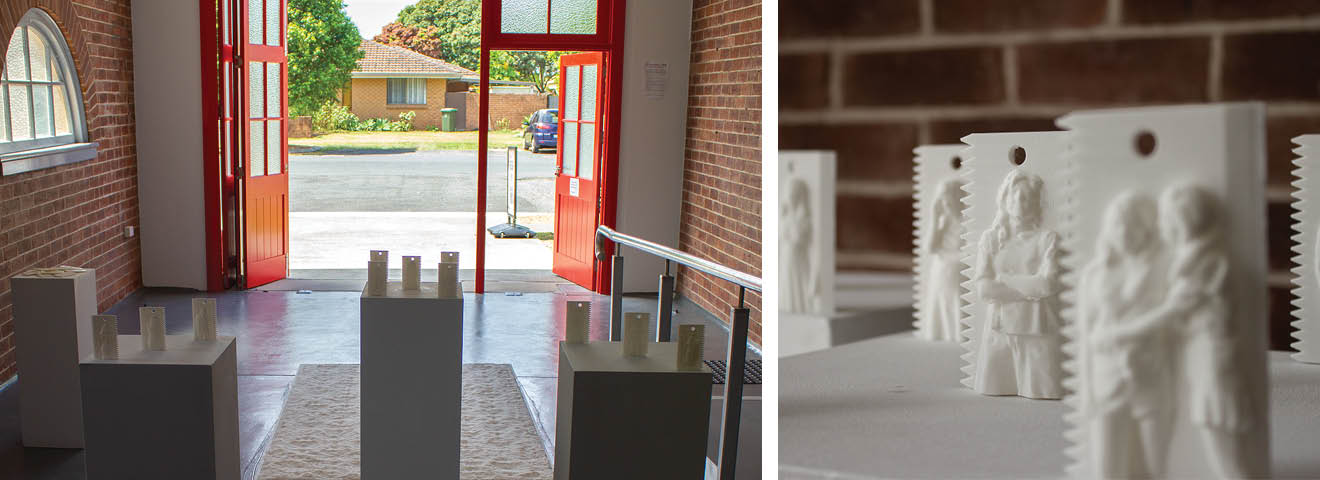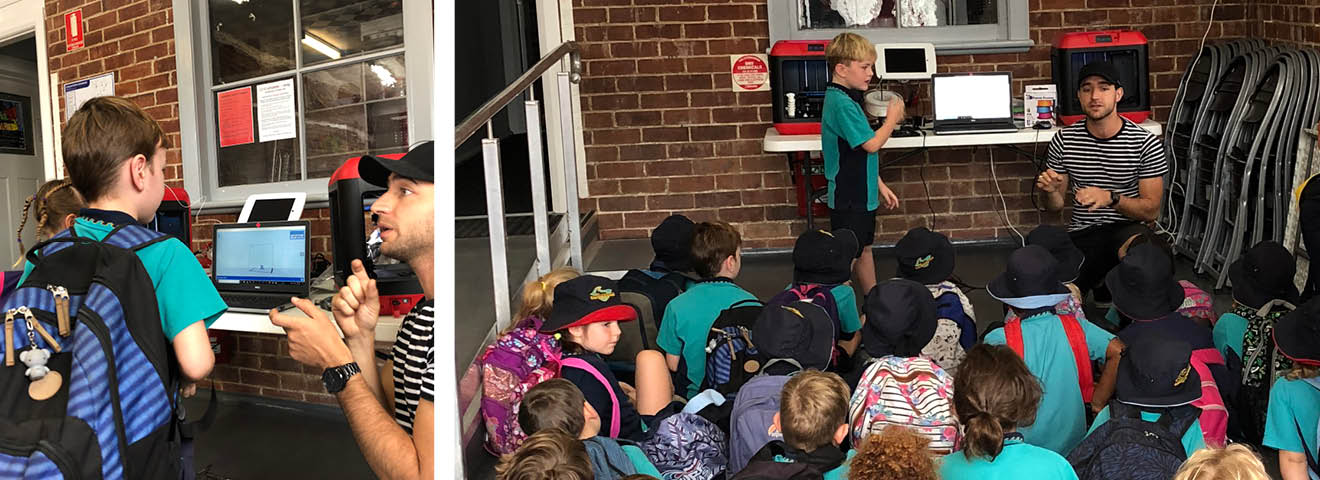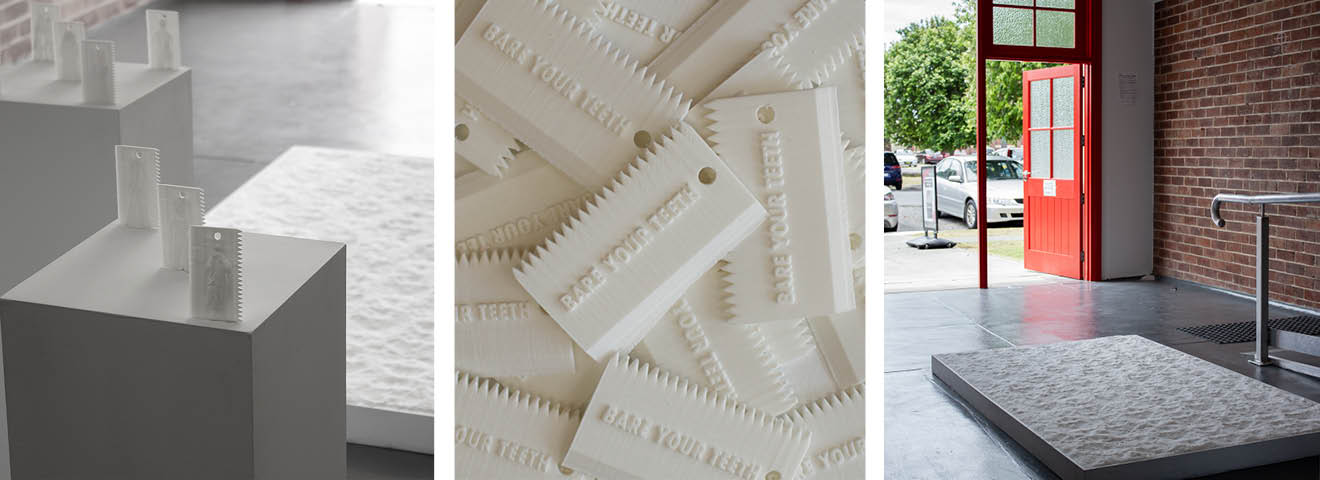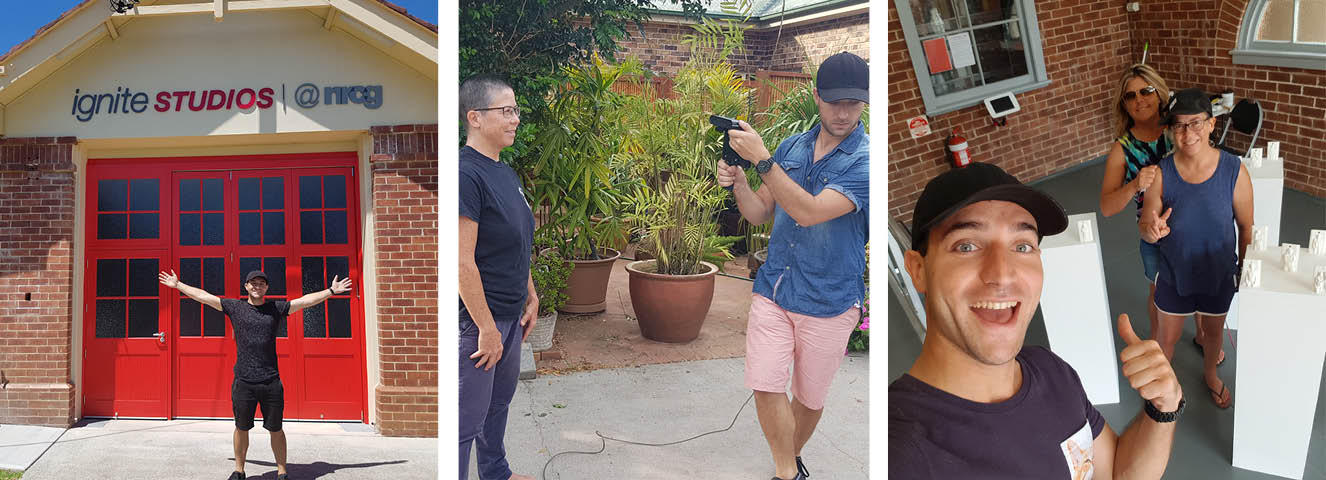Residency Report | Andrew Christie, October 2018
After an eight hour drive from South-West Sydney I dragged myself into my new home, tucked safely in the back of the Ignite studios, and collapsed onto the bed. But despite the long trip, it took no more than a day before my studio was inundated with my presence. My 3D printers hummed in the background as I started scrawling new ideas on a roll of paper which enveloped half of the remaining floor space. It didn’t take long before I met permanent studio residents Lesley and Mel, who made for the best studio neighbours I’ve ever had. As much of my art practice methodology tends to originate from community engagement, I spent most of my first week meeting and interviewing gallery staff, coffee shop owners, library attendants and museum curators in order to find points of connection between the Northern Rivers and myself. Originally, I became engrossed in the history of sugar production and fruit growing and its relation to Southern European migrant workers (much of my work has addressed my Greek and Cypriot heritage), and I spent hours in the Southern Cross University Library combing through old newspaper articles and locally authored books on the subject. By week two I had a regular morning coffee routine, a gym membership, regular research trips around Ballina and even found friends in a pair of water dragons who would sit with me on hot days behind the studio block. I continued my research and was even able to donate some time to giving studio talks with local school children which helped me further connect with the local community.
But it wasn’t until I encountered the All Girl’s Surfriders Club that the image of potential artwork became clear. These inspirational women shared not only their bitter and sweet stories of surfing, but stories about their lives on dry land; their family tales, their ongoing nursing education, their future travel plans. When it came to decide on a body of work that would ultimately show in the project space of Ignite, I looked to the distinct differences of these women who would otherwise never have met without an organisation such as the All Girls Surfriders. The exhibition, titled Bare Your Teeth, displayed the casually dressed bodies of this diverse and inspiring group as 3D-printed cameos on wax combs, an essential tool for surfers used to texture and remove wax on their boards. The subtly and lightness of these forms were countered by the jagged edges of the combs alluding to the simultaneous delicateness and tenacity that comes with the task of navigating the surf as well as any other male-dominated field. Displayed standing on plinths, these cameos overlooked a literal bed of salt imprinted with the pattern of the ocean surface, the low-lying sculpture having the dimensions and weight to approximate that of the average female surfer. Reducing this sculptural representation of the ocean to meet that of the average woman was another way to draw parallels between these women and the surf, collectively working towards empowerment. This show ran towards the end of my residency and the pieces were gifted to members of the club who participated.
Alongside the completion of Bare Your Teeth, I had become deeply attached to the SPRUNG Integrated Dance Theatre which offers dance and theatre workshops for those with disabilities. I had the great fortune to observe and participate in workshops, share stories, ideas and even meals with the dancers, choreographers and other SPRUNG staff. I was immediately captivated by their skilled movements, humour and inspired artistry. It was obvious to me, after the success of one show in Ballina, that the potential for a new and more ambitious project had to be explored. And through discussions with both the NRCG and SPRUNG, ideas began to take form. Before I left Ballina for my home in Western-Sydney, I took 3D scans of the dancers in various positions to begin the process for the exhibition, Virtually Impossible. It is our aim to have these scans 3D printed and used as sculptures as well as props in a live performance at NRCG in the second half of 2019.
Having to leave Ballina was extremely difficult. By the end of my month-long residency I had become so entrenched in life at Ignite beside my three fellow studio companions. I was constantly supported by the NRCG staff, without whom I would most likely never have met the All Girls Surfriders Club or SPRUNG. Not only did my practice mature, but enduring relationships have been made alongside projects that I feel have and will offer something rewarding to the community as well as broaden the scope of discussions surrounding marginalised and underappreciated groups. There is no doubt that the Ignite program has marked a significant point in my career and I sincerely hope that I can maintain a strong relationship with the NRCG for years to come.





